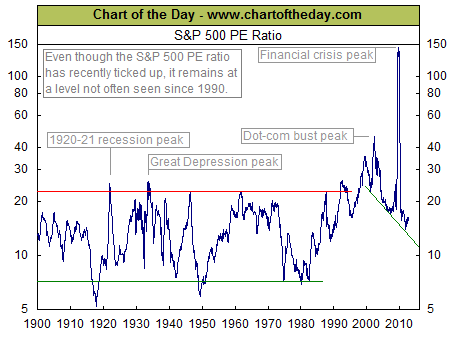California HAS BEEN LIVING IT UP SINCE JERRY BROWN'S FIRST DISASTROUS TERM IN OFFICE DURING THE 1970'S. THE CHICKENS ARE COMING HOME TO ROOST, FINALLY!
Three interconnected forces brought the working-class, inland Southern California city of San Bernardino to
insolvency: a burst housing bubble and lethargic economic growth; high police and firefighter salaries mandated by the
city’s charter; and compounding pension obligations. Bankruptcy should give San Bernardino leverage to deal with the last two, but the big, structural changes required will not be easy or pleasant. Absent such changes, though, salaries and pensions will continue to grow faster than the city’s revenues, crowding out most other government functions and services. San Bernardino offers a telling illustration of austerity’s causes and effects: a tragic failure to think beyond the short term eventually necessitates painful reforms.
We already know something of what San Bernardino’s government will look like in the age of austerity. The city, with a poverty rate equivalent to Detroit’s and a homicide rate that has quietly surpassed Chicago’s, declared a fiscal emergency in early July and officially filed for bankruptcy on August 1. Deferring payments to bondholders just to make payroll, the city has been forced to trim its budget radically.
As a bridge to the bankruptcy proceedings, interim city manager Andrea Miller attempted to reduce the deficit by proposing a new budget called a
pre-pendency plan. Her austerity budget, which passed with only a few changes after much haggling, will form the basis of the plan submitted to the bankruptcy court. The city projects a $45.8 million budget deficit, which the pre-pendency plan would reduce to $7.5 million by making “draconian” and “catastrophic” cuts, in the words of some city council members. Even then, the budget wouldn’t be balanced, and the plan doesn’t address an $18 million cash deficit from the previous fiscal year. Approximately $7 million in deficit reduction comes from transfers, either from special funds—for, say, road work or sewer repair—to the city’s general fund or from the federal government. The city would save another $9.4 million by continuing a 10 percent pay reduction for some municipal workers. The remaining $21.9 million in reductions comes from drastic cutbacks to services or deferred payments, mostly to the pension fund.
In cutting overall expenditures nearly 25 percent, the city leaves virtually no department untouched—including city hall, which will operate with a skeleton crew. Since 2006, the mayor’s office has gone from ten employees to three, counting the mayor. The city eliminated six positions from its information-technology department, cutting to the point at which “core” functions would be threatened. The city has combined departments, contracted out services, and even closed down its successful
Operation Phoenix program, an anti-crime initiative Mayor Pat Morris launched shortly after taking office in 2005. San Bernardino’s community-policing effort will thus lose its two headquarters, which also served as community centers. Three of the city’s four libraries will close, while layoffs will hit 32 parks department employees and one-third of the city’s code-enforcement officers.
These savings, however, won’t be enough to erase the deficit. San Bernardino spends about three-quarters of its budget on public safety—meaning police and firefighters. Very little in the police budget is devoted to non-personnel expenses, so the cuts inevitably affect staffing levels. The new budget leaves the department with 320 employees, down from 379. Most of the reductions were to civilian support staff, not sworn officers. But the police will have a great deal more work, especially now that the department will pick up the slack from laid-off code-enforcement officers. Residents can assume that crime rates will continue to climb, especially given the demise of Operation Phoenix.
The firefighters’ union has been the most stubborn and transparently self-interested in San Bernardino. The average firefighter earns about $150,000 per year, and the union has resisted making any salary concessions. The city manager’s initial proposal would have eliminated 20 positions and either closed down a battalion or implemented rotating brownouts (that is, temporary shutdowns) of stations. City council members, some elected with help from the firefighters’ union and many worried about angry constituents facing slower response times, postponed a decision to explore alternative proposals. According to the city, the San Bernardino Fire Department has among the highest call loads in the country for a department its size.
San Bernardino’s austerity plan leaves an atrophied city government, but essential functions remain in place. Crime will likely go up, but it won’t necessarily skyrocket. Greek-style looting and arson appear unlikely. Closing three of four libraries isn’t ideal, but it isn’t the end of civilization, either. At the same time, however, the deep cuts do make San Bernardino an even less hospitable place. Businesses will be even more skeptical about moving to a city where the government can’t afford to fill potholes or respond quickly to crimes because it has been compromised by decades of poor decision-making. Much of the city’s deficit reduction is in deferred payments that have recently earned the ire of the California Public Employees’ Retirement System and the Securities and Exchange Commission; under a “best-case scenario,” the budget is unlikely to be balanced even with these cuts and deferrals. San Bernardino can balance its budget only by boosting revenues, which requires more businesses, not fewer. It’s not clear how long the city can continue on this unsustainable path.
Perhaps bankruptcy will prove the ultimate salve, cutting away the structural inefficiencies (from pensions to high municipal salaries) that went unaddressed for years. The city’s options are now limited, because it waited too long to address these problems. The United States has many structural problems of its own—most notably Medicare—and, as San Bernardino shows, myopia is never recommended. San Bernardino is a tragedy—and a warning to the rest of the country.
Jeremy Rozansky is an assistant editor at National Affairs.


